 Conventional Cruise Missile Attack Submarines: USS Grayback, Growler SSG-574, 577. 1958-1964.
Conventional Cruise Missile Attack Submarines: USS Grayback, Growler SSG-574, 577. 1958-1964.Cold War US Subs
GUPPY | Barracuda class | Tang class | USS Darter | T1 class | X1 class | USS Albacore | Barbel classUSS Nautilus | USS Seawolf | Migraine class | Sailfish class | Triton class | Skate class | Skipjack class | Tresher class | Sturgeon class | Los Angeles class | Seawolf class | Virginia class
Fleet Snorkel SSGs | Grayback class | USS Halibut | Georges Washington class | Ethan Allen class | Lafayette class | Ohio class | Colombia class
The first US cruise missile submarines
Development
In the leading up to the first ballistic submarines, both the USA and USSR experimented with nuclear-tipped cruise missiles, which easier to build. The impetus were the first V-1 missiles obtained from Germany, as well as blueprints and engineers as part of Operation Paperclip.
Soon the Army competed with the Navy to test its first ship-launched, and then submarine-launched V1s in the hope to fit a nuclear warhead on this. This was part of the postwar Navy/Air force dispute about the monopoly on the nuclear deterrence. The Air Force had the lead in this and maintained it for years (The navy lost, after the cancellation of the United States class). But nothing could prevent the Navy to opt-in for a rapid conversion of a Gato-class boat for such tests.
The “fleet Snorkel” program
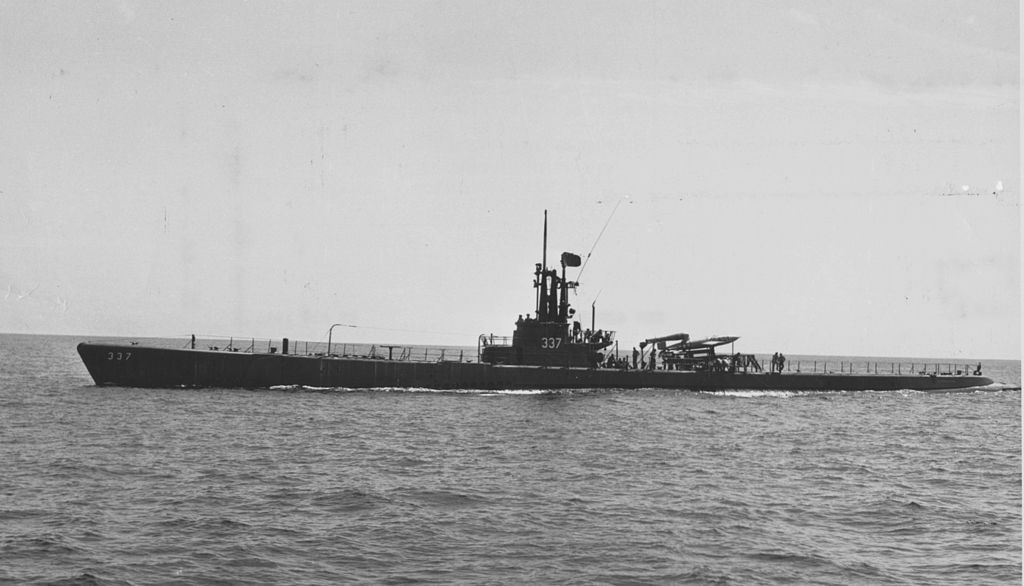
USS Carbonero with the Loon missile.
The Carbonero class and Loon program
“Fleet Snorkel” SSGs were the first attempts to launch cruise missiles, through the Loon program and USS Cusk, Carbonero.
The very first attempts in the long development towards submarine-based nuclear deterrence started with launching V2s from diesel submarines in 1946. These early experiments, added with the help of German scientist and plans obtained of the V1 and V2 led to a Navy rocket program. The Navy created a facility and conducted a variety of research programs related to rocket propulsion, materials science, and other areas of rocket technology to achieve these goals.
Early on, USS Cusk and Carbonero (Gato class “fleet snorkels”) were requisitioned for conversion. As pat of the Loon program to test a copied V1, they were fitted with launching ramps aft. The V1 was housed while underwater in a specially built cylindrical container on deck, immediately in front of the ramp. The Loon was launched aft. Many tests were performed, each time requiring very calm seas. Radar tech however progressed to such a point, the launcher submarine could enter its range, despite the long range of the V1 (Loon). It was estimated the latter could be equipped with a nuclear tip, and that the sudden surfacing and launch operation could be done before any counter-strike (likely a patrol plane) arrived on site.
USS Cusk returned to GUPPY standard service, while USS Carbonero tested Regulus missiles.
The Barbero class and Regulus program
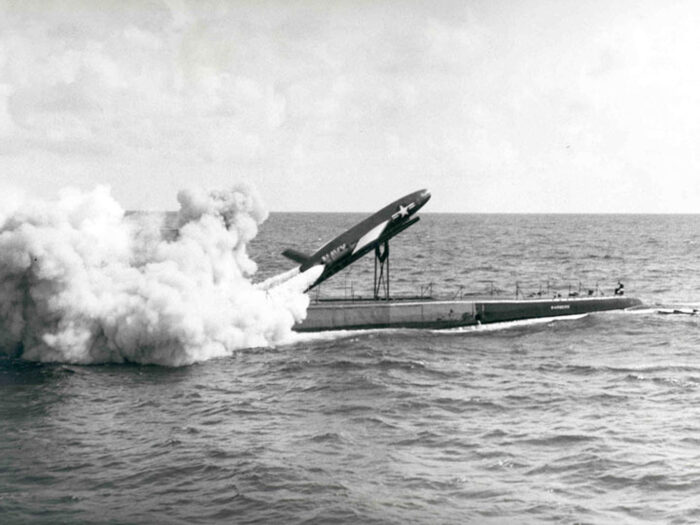
Regulus launch from USS Barbero
Two more submarines were converted, this time with streamlined fins and other GUPPY conversion additions, to test the new Regulus, long-derived from the V1 and much improved. This time a more vertical launch was the goal. USS Barbero was a bit different as she had been converted previously as a transport submarine and retained her original fin for a time. She was considered an interim before the arrival of the USS Grayback. The Regulus I program ended in 1961, and both submarines were reverted to their previous role, while USS Barbero was discarded in 1965 and Tunny converted back as a transport submarine, joining USS Perch and Sealion in 1966 wich role as transport subs was to carry a LVT, jeep and up to 50 troops, active in Korea and Vietnam for “spec ops”. A tailored “sub-oiler”, USS Guavina, was also converted. She had a new fin, only three TTs, and could carry 160k us. gal, to resupply forward-deployed SSK or early SSBNs on long patrols. Classified as SSO, the program was revised for a time with the P6M atomic seaplane program.
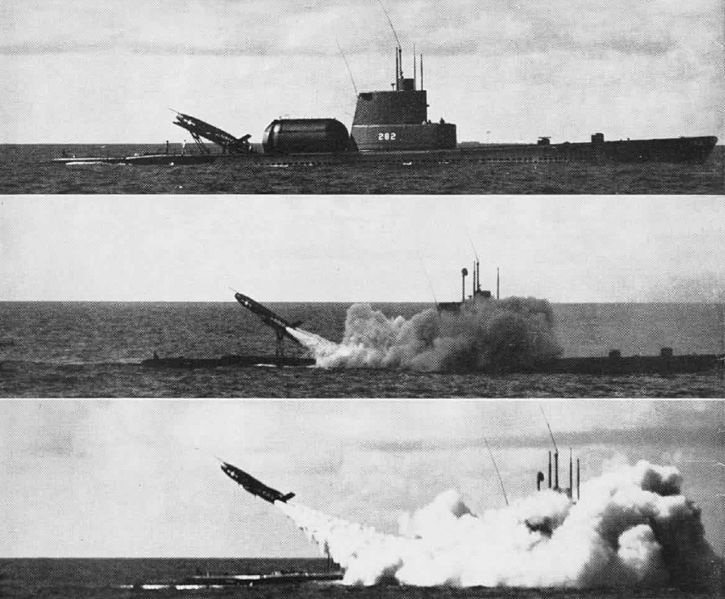
USS Tunny (SSF-282) Regulus I Launching sequence 1956
Towards a dedicated design: USS Grayback
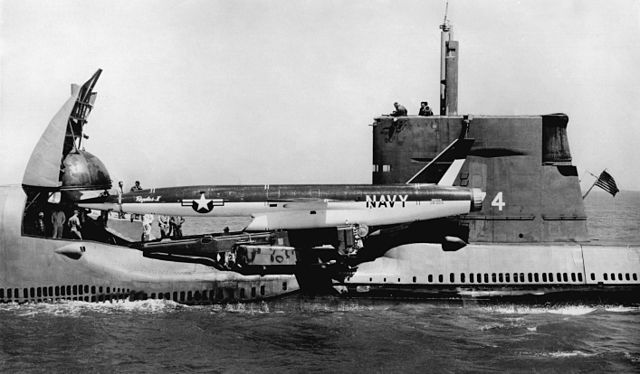
The Grayback-class submarine were two relatively different guided missile-carrying submarines designed by and for the United States Navy to operate the brand new Regulus I and Regulus II nuclear cruise missiles. Deployed in 1957–64, they could be considered as the first US strategic submarines, but were quickly phased ou as soon as appeared the Polaris Submarine Launched Ballistic Missiles (SLBMs). The previous gato-class USS Tunny and USS Barbero were modified earlier to carry two Regulus I missiles per boat, and the Grayback class could operate four, or later two Regulus II.
The Grayback class were originally ordered as sisters of USS Darter, so closely related to the Tang-class submarines, but converted under project SCB 161 as missile submarines during construction. Thus they shared many similarities.
The Regulus Program: Navy’s Matador
Regulus I
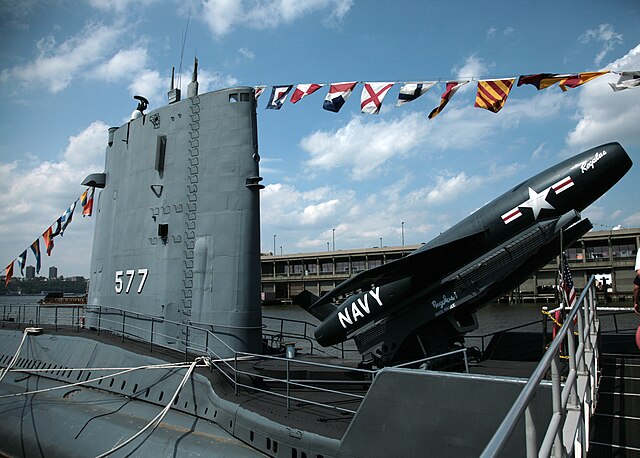
The Regulus program was initiated to replace the Loon program. It’s development went back to 1943. Chance Vought Aircraft signed indeed a study contract for a 300-mile (480 km) range missile to carry a 4,000-pound (1,800 kg) warhead at the time, confident more informations could be obtain via Operation Paperclip and its own abilities. The project however was postponed, not properly funded and stayed in limbo for four years. By May 1947 the USAAF awarded Martin Aircraft for a turbojet powered subsonic missile called “Matador”. The Navy wanted to keep a lead in this field, againsty the Air Force and developed a competitive program, for submarine use but using the same J33 engine as the Matador. In August 1947, specifications for the “Regulus” program (a type of deep sea fish) were issued. It needed to carry a 3,000-pound (1,400 kg) warhead (large enough to be nuclear) to 500 nautical miles (930 km) at Mach 0.85 with a probable error margin of 0.5%, or 2.5 nautical miles (4.6 km) parameters 50% of time, so clearly nuclear tactical.
Regulus also built on the previous naval program JB-2 Loon missile, a development of the V-1 flying bomb obtained by the Navy in 1946. Testing was performed from 1947 to 1953 at Naval Air Station Point Mugu with USS Cusk and USS Carbonero as seen above. They were unable to submerge until after launch, leaving them exposed.
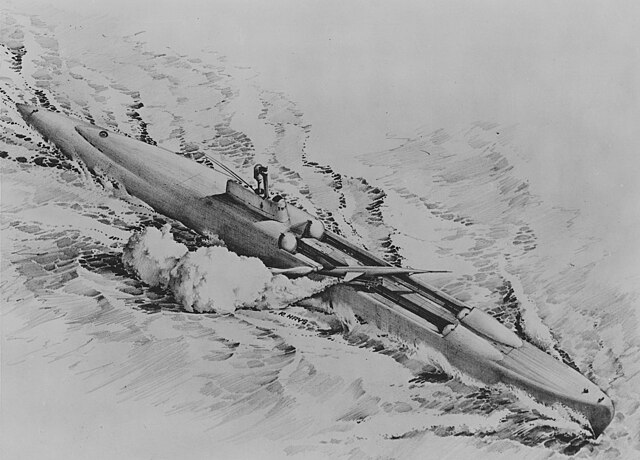
The latter Permit SSGN program artist view (cancelled 1964)
⚙ Regulus I, II* specifications |
|
| Weight | 10,000-12,000 ibs* (4,500 and 5,400* kg) |
| Dimensions | 30 x 4 x 10 ft (diameter and wingspan) (9.1 x 1.2 x 3 m) |
| Dimensions* | 57 ft 6 in x 20 ft 1-in x 50 in (17.53 x 1.3 x 6.12m)* |
| Propulsion | Martin Aircraft turbojet, same as USAF Matador |
| Propulsion* | GE J79-GE-3 turbojet + Rocketdyne solid-fueled rocket* 15,600 lbf (69 kN)+135,000 lbf (600 kN) |
| Speed | Mach 0.85 |
| Speed* | Mach 2* |
| Range | 500 nautical miles (930 km) |
| Range* | 1000 nautical miles (1,852 km)* |
| Ceiling | 40,000 to 59,000 feet (18,000 m)* |
| Accuracy | 0.5% error margin, 2.5 miles radius |
| Payload | 3,000-pound (1,400 kg) warhead, W27 Thermonuclear, air burst or surface burst 10k ft |
| Guidance | Intermediate Sub guidance, inertial* |
The Regulus was very close to the Matador and almos interchangeable. They looked like basically as pilot-less F-84 fighter aircraft and the test versions even had landing gear to be re-used After launch. Guidance used control stations carried by modified picket submarines (Migraine class) or surface ships. Should the Navy choose, it could also be be flown remotely by a chase aircraft, until reaching a safe final approach path. The Navy also developed the “Trounce” system (Tactical Radar Omnidirectional Underwater Navigational Control Equipment) carried by a submarine. But this navy/air force similar procurement was cut back by the United States Department of Defense, forcing to the Navy to seek the Matador for their use. The latter of course maintained the Regulus could perform better, having some advantages:
-The Regulus required only two guidance stations (vs three)
-It could also be launched quicker (matador had extra boosters to be fitted on launcher)
-Chance Vought made a recoverable version KDU-1 usable as target drone making it cheaper to use in tests.
The Navy program continued until the Rugulus made successful flights by March 1951. Chance Vought procured specialized trucking for oversize loads and even developed its special tractor trailer to carry the Regulus I.
Regulus II
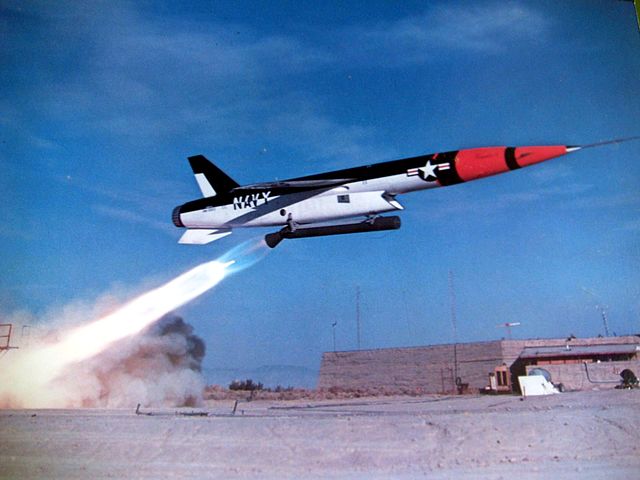
The SSM-N-9 Regulus II was also deployed from tailored SSG, tailored for the two Grayback-class submarines in development as well as USS Halibut (SSGN-587) and in a later phase, four heavy cruisers that already testing the Regulus I. The ambition was to convert 23 other submarines. The submarines came with an integral hangar integral built-in the hull and featuring the SINS (Ship’s Inertial Navigation System) to control the missile before launch. A hangar was installed on the LST USS King County (AG-157) for experimental tests from 5 April 1957 and 48 test-flights of Regulus II prototypes were carried out with 30% success. Production was authorized by January 1958 with a first launch by USS Grayback in September 1958.
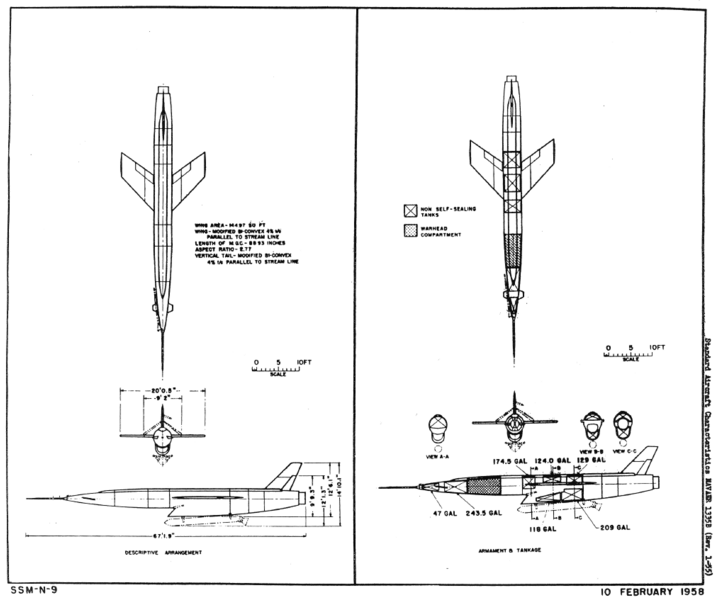
The Regulus II was performing better: Mach 2, twice the range, better altitude, larger W27 thermonuclear payload and better guidance. However the high cost (1 million $ apiece) ws its undoing, under defence secretary budgetary pressure as it competed against the Matador, plus the emergence of the SLBM had the program government-terminated on 19 November 1958 and all support retired by 18 December 1958 under Navy Scretary Thomas S. Gates. At this time, Vought had completed 20 missiles, 27 more in constrution. They ended as navy target drones for SAM tests. This made the Grayback class and Halibuit redundant quite quickly, so after tests for other program, they were retired in the 1960s.
Note: The Mark 27 T-Nuke:
The Mark 27 was designed by the University of California Radiation Laboratory (UCRL, now Lawrence Livermore) by the mid-1950s and tested at Los Alamos for the Mark 28/B-28 nuclear bomb and W28 warhead. The Mark 27 was improved, twice as heavy with a yield of 1,9 kt (7,900 TJ) versus the 1,100 kt for the Mark 28. Produced from 1958, retired by 1964 as the Grayback class/Regulus II was terminated a program under the Kennedy administration. US Navy bombers which could carry them were the Douglas A-3 Skywarrior and North American A-5 Vigilante until the White House, under pressure by the Air Fiorce, terlinated this option for ballistic missile only. The aircraft were repurpose for reconnaissance by 1965.
The W27 warhead weighed 2,800 pounds (1,300 kg) and 20 were produced for the SSM-N-9 Regulus II. A special team in the crew was deployed for their care and operation, nominally not attached to the SAC but the Navy, under presidential orders (same deterrence procedures with white house final orders, keys and number match).
Design of the class
Hull and general design
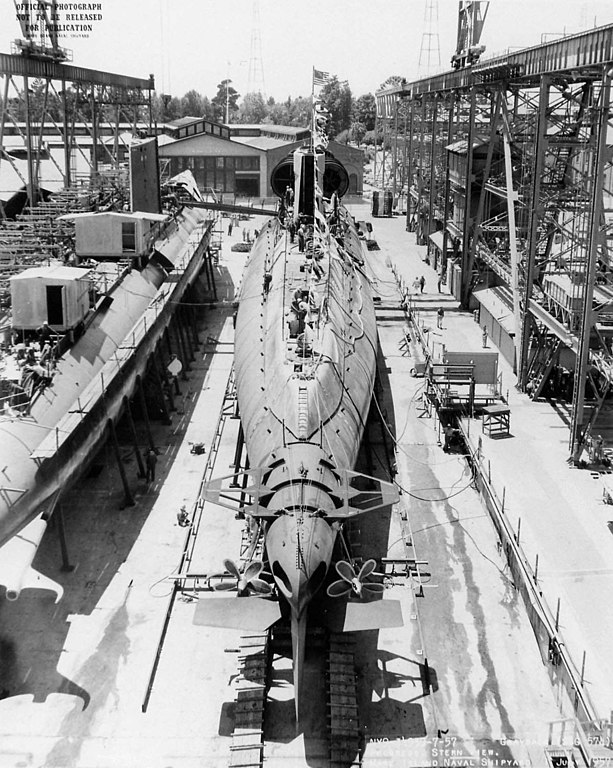
In construction at Mare Island, 1957.
The general design was still somewhat close to the Tang class and especially USS Darter. Grayback and Growler were in fact even laid down as sisters to USS Darter, but when it was decided to convert them, an entire front section was created by cut them in two, pushing forward by c15m (49 feet) the prow, adding a new section and accommodatin two cylindrical hangars for the Regulus missiles.
They displaced 1,740 long tons (1,768 t) light, surfaced and 2,768 long tons (2,812 t) submerged, for 273 feets long overall initially, 27 feet 2 inches wide and 19 feet in draught (83 x 8.28 x 5.8 meters). The biggest difference with older design was the lenghtened hull and the two container tubes forward created two distictive prominences raising back, with heavy hatches. The tubes were faired into the prow so this required extra lenght, put into good use for the torpedo tubes and extra accomodations.
Power Plant
The powerplant was essentially the same as USS darter, with two shafts, driven by three Fairbanks-Morse Diesel engines as main propulsion system (total 4,500 shp (3,400 kW)) coupled with two Elliott electric motors (total 5,500 shp (4,100 kW)) driving the shafts through a transmission, and the power was stored on four 126-cell GUPPY I batteries.
Top Speed was 15 knots sirfaced (28 km/h; 17 mph) and 12 knots (22 km/h; 14 mph) submerged. Speed was not much a concern, however great care was placed into the hull’s streamlining and noise reduction. It was 1950s tech still. In the 1960s that was less impressive. The Range is unkwown, not precised in any source, but estimated close to USS Darter so around 13,000 nautical miles at 10 knots, or close to 150 nautical miles at 3 knots for a Test Depth of c700 ft (210 m).
Armament
Outside the Regulus I (four) and later Regulus 1 (two) cruise missiles seen above, the Grayback class were given the same eight torpedo tubes of classic conventional attack submarines of the time: Six in the bow, two in the stern.
It’s well possible they were Mk 54 torpedo tubes in the bow, but stern Mk 53 tubes (not Mark 55). If again compared to Darter, they carried c22-26 torpedoes Mark 35.
400 were Mark 35 were produced between 1949 and 1952 and were service until 1960, replaced by the Mark 37. The fire control system fed final data through a 1″ (25 mm) diameter umbilical cable cut away during tube expulsion. This was an anti-subarine torpedo first and foremost, with surface targets secondary. It could received pre-enabled run-out course/distance, search ceiling and floor data as well a right or left circling search pattern.
⚙ Torpedo specifications |
|
| Weight | 1,770 lbs. (803 kg) |
| Dimensions | 13 ft 5 in (4.089 m) |
| Propulsion | Electric-Battery, seawater |
| Range/speed setting | 15,000 yards (13,710 m)/27 knots |
| Warhead | 270 lbs. (122.5 kg) HBX |
| Guidance | Active and passive acoustic, spiral search |
Sensors
BPS-12 radar, BQS-4, BQR-2 sonars, BLR-1 ECM suite:
BPS-12 radar: Medium-range surface search and navigation radar, modified BPS-5, similar to BPS-14, periscope antenna and conventional antenna.
BQS-4: Active/passive detection sonar, AN/BQR-2 passive detection system and added active detection capability. Chin bow dome.
BQR-2 sonars: Cylindrical (or circular) array mounted in chin dome.
BLR-1 ECM suite: No info yet.
In the late 1960s she obtained the new BQG-4 sonar and later before end of the decade, she had the BLR-1 ECM suite removed and replaced by the new WLR-1 ECM suite. This was her last upgrade.

Old Atlas coll. profile after modernization, Vietnam.
⚙ specifications |
|
| Displacement | 1,740 long tons (1,768 t) light, 2,768 long tons (2,812 t) sub |
| Dimensions | 273* x 27 ft 2 in x 19 ft (83 x 8.28 x 5.8 m) |
| Propulsion | 3 Fairbanks-Morse Diesel engines, 2 Elliott electric motors |
| Speed | 15 kts (28 km/h; 17 mph) surfaced, 12 kts (22 km/h; 14 mph) submerged |
| Range | Same as Darter |
| Test Depth | Same as Darter |
| Armament | 2× Regulus missile hangars (4x Regulus I/2x Regulus II), 8× 21 in TTs (6 bow, 2 stern) |
| Sensors | BPS-12 radar, BQS-4, BQR-2 sonars, BLR-1 ECM suite |
| Crew | 84 officers and men |
*Later 317 ft 7 in (96.80 m)
Modernization and changes
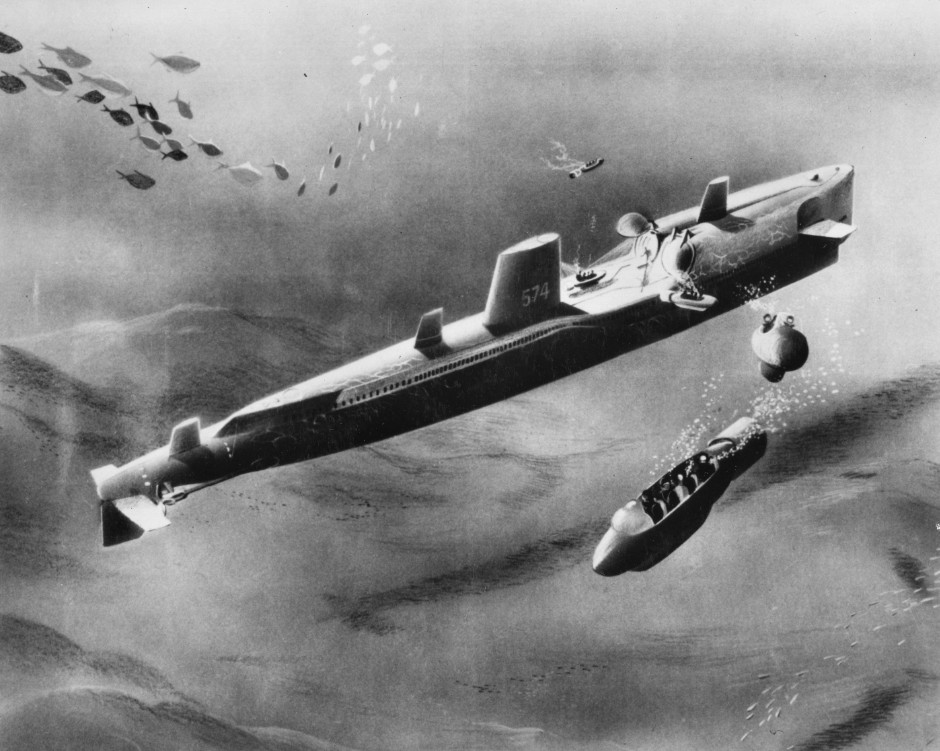
US Navy concept art of USS Grayback launching Swimmer Delivery Vehicles (SDVs) for the US Navy SEALs/UDT, a conversion concept artist, but it was only tested. src hisutton.com
In 1964 when the program was cancelled, they lost their two Regulus SSM launchers with apparatus such as the extractor/conveyor system. Later between November 1967 and May 1969 at Mare Island Naval Yard, USS Grayback’s length was increased to 101.8m (334 ft) for 2,670 tonnes standard/surfaced and 3,650t submerged. The missile hangars were converted to protect swimmers and their delivery vehicles (SDV), and the fin was raised plus the BQG-4 PUFFS sonar was added, with its caracteristic “shark fins”. She became an amphibious transport (LPSS). Her sister became a simple attack submarine.
Career of the Grayback boats:
 USS Grayback SSG-574
USS Grayback SSG-574
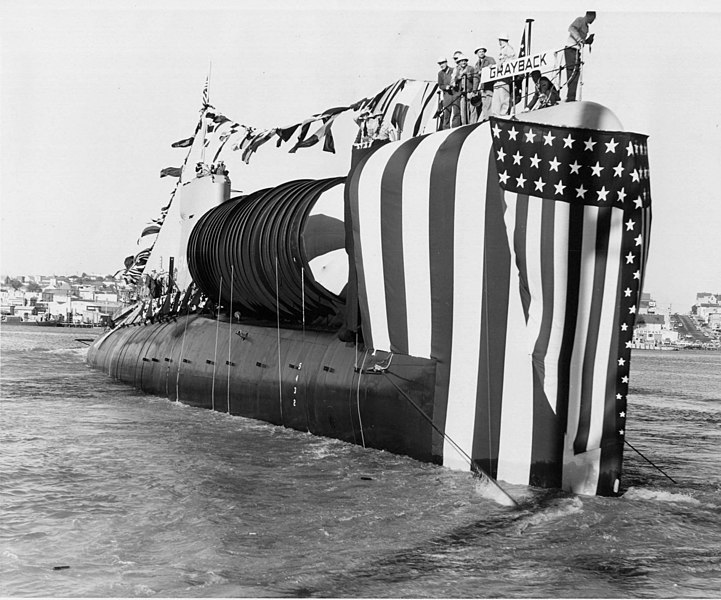
Launch at Mare Island, 1957. Note the unfaired missile hangars.
USS Grayback was the first dedicated SSG, converted on slipway, laid down at Mare Island Naval Shipyard on 1 July 1954, Launched on 2 July 1957 and Commissioned on 7 March 1958 as SSG-574. In 1958, she started tests and shakedown, West Coast. While of Ventura County, Port Hueneme in California by September 1958 she launched her first Regulus II missile. But the program was cancelled in December 1958 and so instead she was equipped with four Regulus I missiles. From San Diego she sailed on 30 October to Pearl Harbor on 8 November and was back at Mare Island after a 10,000 mile test cruise.
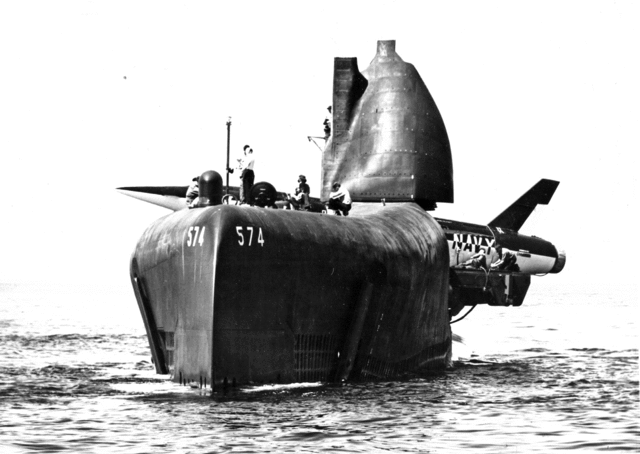
Regulus II test, prow view, 1958
On 9 February 1959 she sailed again for Pearl Harbor as new homeport for the remainder of her career. Underway she stopped at Mazatlan, Mexico. She also sailed north to Dutch Harbor (Umak Island, Sequam Island and Kodiak in Alaska) and made great cold missile exercises on 3–31 July. This was the first of nine deterrent missile strike missions, from 21 September to 12 November. She ended these at Yokosuka.
On 22 February 1960, her missile launching system was modified as her electrical circuits. She went on more deterrent missile strike missions, seven sorties, over two and half years, 18 months at sea submerged most of time. In total she spent 20 months at sea, 130,000 miles (209,000 km) on such missions, being awarded only by April 1997, the right to wear the Navy’s SSBN Deterrent Patrol insignia. Most of their work was declassified indeed.
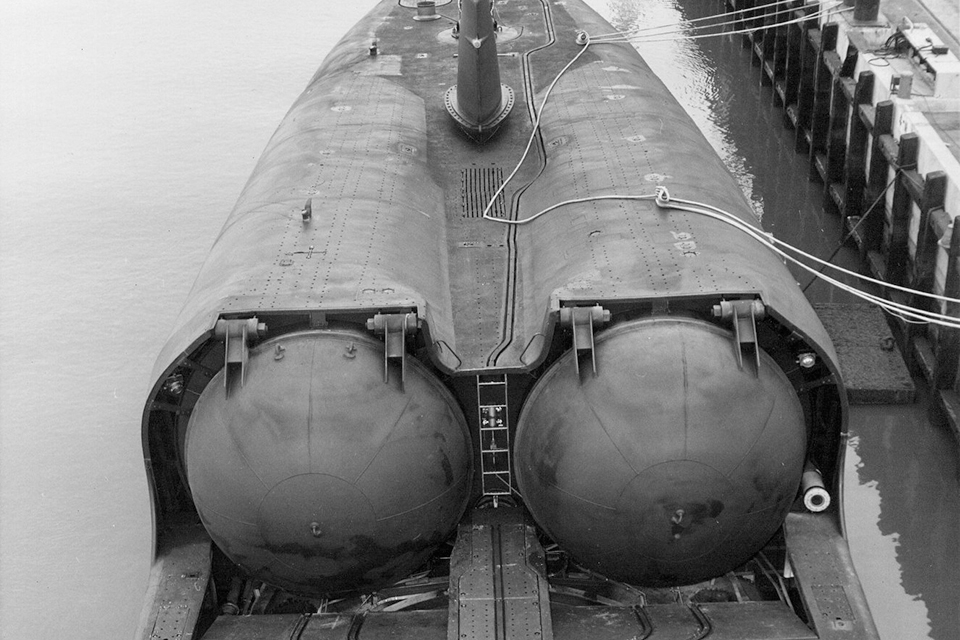
On 27 August 1963 while snorkeling and recharging batteries, USS Grayback was buffeted in strong seas, with water seeping and crating a short, starting a fire in the berthing compartment. One seaman died by smoke and fumes. The Main propulsion failed under restored so she can limp back to Pearl Harbor and be repaired over two weeks. The naval staff, like her sister and Halibut gave them the task of eliminating the Soviet naval base at Petropavlovsk-Kamchatsky in case of war. With her sister she provided the first deterrent patrols until the Polaris program came to fruition. The USSR had nothing comparable yet.
As the whole Regulus missile program was terminated in 1964, USS Grayback was withdrawn from active service and decommissioned at Mare Island Naval Shipyard on 25 May 1964. She could have been simply broken up at that stage. But being still in a good state with little service, the navy had orther plans:
Amphibious transport submarine:
She had a quick conversion at Mare Island Naval Shipyard from November 1967 (US$15.2 million, up to US$30 million cost). Indeed the Navy since WW2 had no amphibious transport submarine. She encompassed many design idea and ended with hull classification symbol LPSS-574, on 30 August 1968. Called an “APSS” (Auxiliary Personnel Submarine) on plans and documents this classification was never really official but for a few days. Her sail was lenghtened by ten feet, two auxiliary tanks at the forward end of the engine room were added, for 12 feet more, the missile chambers wedre completely overhauled to carry and operate 67 embarked troops plus SEAL Swimmer Delivery Vehicles (SDVs). They had also a decompression chamber in the starboard hangar.
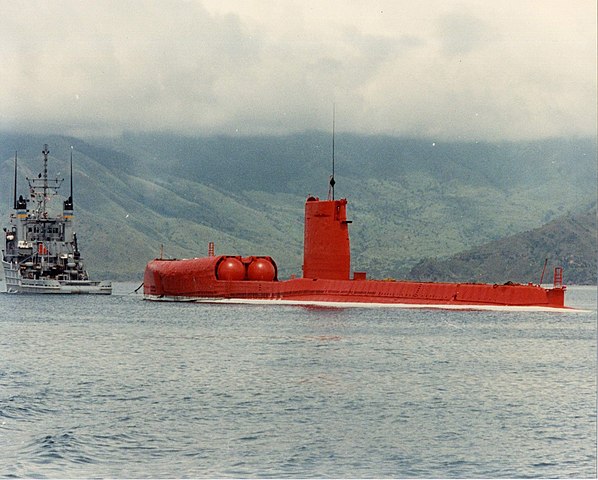
USS Grayback towed to position to be sunk as target, painted red, 1986.
In June 1972, she started tests with Navy SEALs, on the coastal waters of North Vietnam (Operation Thunderhead), an attempt to rescue American POWs in North Vietnam. By January 1982 five U.S. Navy divers diedin accident: A vacuum was drawn in the chamber by accident. It happened on the coast of Subic Bay. This led to design changes and procedures. She was eventually decommissioned on 15 January 1984 at Subic Bay NS (Philippines) and latter sunk as a target on 13 April 1986, South China Sea, painted red.
 USS Growler SSG-577
USS Growler SSG-577
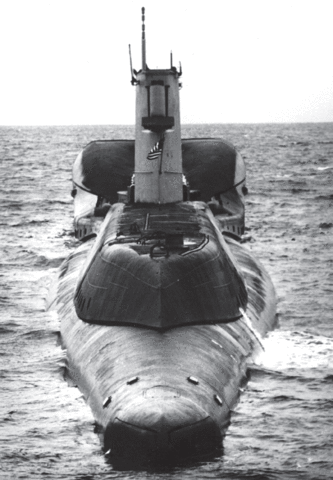 USS Growler was laid down on 15 February 1955 at Portsmouth Naval Shipyard, Kittery, Maine, launched on 5 April 1958, fitted out and commissioned at Portsmouth on 30 August 1958. Her first capatin was Lieutenant Commander Charles Priest, Jr.. After training on the East Coast she made her shakedown cruise to and from Roosevelt Roads Naval Station in Puerto Rico by February 1959. After fixes in Portsmouth she was back in the Caribbean by March for life fire tests of her Regulus I and Regulus II missiles assisted by USS Runner, fitted with its Regulus guidance equipment. She was back to Portsmouth by 19 April.
USS Growler was laid down on 15 February 1955 at Portsmouth Naval Shipyard, Kittery, Maine, launched on 5 April 1958, fitted out and commissioned at Portsmouth on 30 August 1958. Her first capatin was Lieutenant Commander Charles Priest, Jr.. After training on the East Coast she made her shakedown cruise to and from Roosevelt Roads Naval Station in Puerto Rico by February 1959. After fixes in Portsmouth she was back in the Caribbean by March for life fire tests of her Regulus I and Regulus II missiles assisted by USS Runner, fitted with its Regulus guidance equipment. She was back to Portsmouth by 19 April.
Next she was assigned to the Pacific, reached via Norfolk, Key West, Panama and Pearl Harbor on 7 September. She became flagship, Submarine Division 12. She took part in many exercises and missile practice. When declared ready she started her first of many Regulus Deterrent Mission. The first was between 12 March and 17 May 1960, with missiles carrying nuclear warheads. The crews were assigned to strict secret, and these remained classified for 50 years. These missions could last up to two months and long submerhed period putting the crew to great strain as these were early diesel boats. Her second patrol started by 1 January 1961 under Lieutenant Bruce Felt.
From May 1960 until December 1963 like her sister USS Growler performed nine deterrent patrols, ending mostly in Yokosuka.
However the program was terminated in 1964. She sailed back to Mare Island, to be decommissioned on 25 May, placed in reserve. She joined the Inactive Fleet section, Puget Sound and later the Philadelphia Naval Shipyard.

Stricken on 1 August 1980 she was to become a torpedo target but 8 August 1988, the Congress authorized her selling. She was purchased with Zachary Fisher from the Intrepid Sea, Air & Space Museum in New York City for her to be transformed into a museum ship, berthed there. For thise, she was overhauled in Brooklyn, the hull costs past $1.5 million to restore. She was posted at Pier 86 by late February 2009, opening on 21 May 2009 in Fleet Week 2009. Today she is the only SSB/SSBN opened to the public, and world’s second with the French “Le Redoutable”.
Read More/Src

Books
Jackson, Robert, Fighting Ships of The World, London: Amber Books Ltd 2004
Gardiner, Robert and Chumbley, Stephen, Conway’s All the World’s Fighting Ships 1947–1995 Conway Maritime Press, 1995.
Links
hisutton.com/USS_Grayback.html
navypedia.org/
navsource.org/archives/08/09idx.htm
navsource.org/archives/08/08574.htm
https://www.hnsa.org/ uss-growler-ssg-577/
http://www.regulus-missile.com/
globalsecurity.org/ ssg-574.htm
commons.wikimedia.org/
ussgrayback574.com
en.wikipedia.org/wiki/Grayback-class_submarine
january 16 2019 37-year-anniversary of grayback accident
historynet.com uss grayback secret submarine landing boat


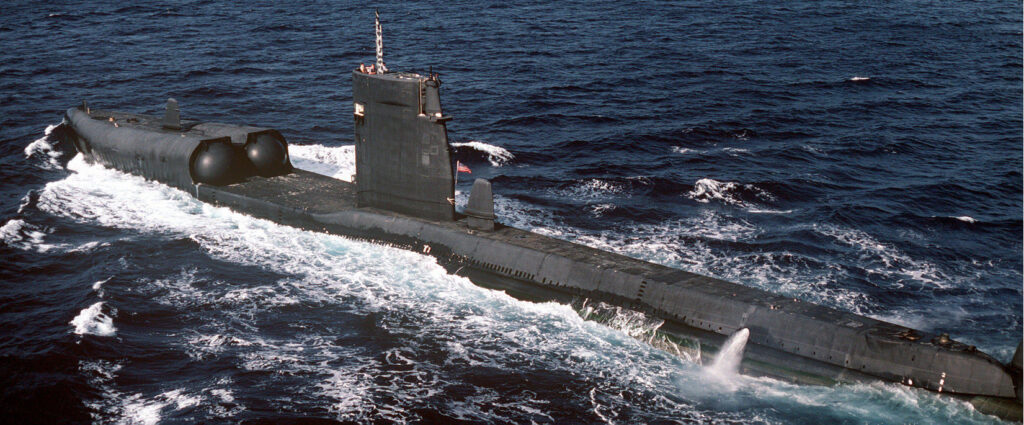
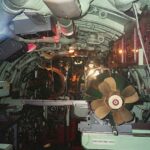
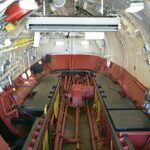
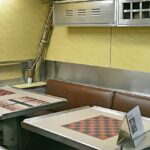
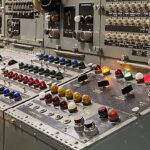
 Latest Facebook Entry -
Latest Facebook Entry -  X(Tweeter) Naval Encyclopedia's deck archive
X(Tweeter) Naval Encyclopedia's deck archive Instagram (@navalencyc)
Instagram (@navalencyc)





 Austrian Navy
Austrian Navy French Navy
French Navy Royal Navy
Royal Navy Armada Espanola
Armada Espanola K.u.K. Kriegsmarine
K.u.K. Kriegsmarine Dansk Marine
Dansk Marine Nautiko Hellenon
Nautiko Hellenon Koninklije Marine 1870
Koninklije Marine 1870 Marinha do Brasil
Marinha do Brasil Osmanlı Donanması
Osmanlı Donanması Marina Do Peru
Marina Do Peru Marinha do Portugal
Marinha do Portugal Regia Marina 1870
Regia Marina 1870 Nihhon Kaigun 1870
Nihhon Kaigun 1870 Preußische Marine 1870
Preußische Marine 1870 Russkiy Flot 1870
Russkiy Flot 1870 Svenska marinen
Svenska marinen Søværnet
Søværnet Union Navy
Union Navy Confederate Navy
Confederate Navy Armada de Argentina
Armada de Argentina Imperial Chinese Navy
Imperial Chinese Navy Marinha do Portugal
Marinha do Portugal Mexico
Mexico Kaiserliche Marine
Kaiserliche Marine 1898 US Navy
1898 US Navy Russkiy Flot
Russkiy Flot French Naval Aviation
French Naval Aviation Russian Naval Aviation
Russian Naval Aviation Sovietskiy Flot
Sovietskiy Flot Royal Canadian Navy
Royal Canadian Navy Royal Australian Navy
Royal Australian Navy RNZN Fleet
RNZN Fleet Chinese Navy 1937
Chinese Navy 1937 Kriegsmarine
Kriegsmarine Chilean Navy
Chilean Navy Danish Navy
Danish Navy Finnish Navy
Finnish Navy Hellenic Navy
Hellenic Navy Polish Navy
Polish Navy Romanian Navy
Romanian Navy Turkish Navy
Turkish Navy Royal Yugoslav Navy
Royal Yugoslav Navy Royal Thai Navy
Royal Thai Navy Minor Navies
Minor Navies Albania
Albania Austria
Austria Belgium
Belgium Columbia
Columbia Costa Rica
Costa Rica Cuba
Cuba Czechoslovakia
Czechoslovakia Dominican Republic
Dominican Republic Haiti
Haiti Hungary
Hungary Honduras
Honduras Estonia
Estonia Iceland
Iceland Eire
Eire Equador
Equador Iran
Iran Iraq
Iraq Latvia
Latvia Liberia
Liberia Lithuania
Lithuania Mandchukuo
Mandchukuo Morocco
Morocco Nicaragua
Nicaragua Persia
Persia San Salvador
San Salvador Sarawak
Sarawak Uruguay
Uruguay Venezuela
Venezuela Zanzibar
Zanzibar Warsaw Pact Navies
Warsaw Pact Navies Bulgaria
Bulgaria Hungary
Hungary

 Bundesmarine
Bundesmarine Dutch Navy
Dutch Navy Hellenic Navy
Hellenic Navy Marina Militare
Marina Militare Taiwanese Navy
Taiwanese Navy Chinese Navy
Chinese Navy Indian Navy
Indian Navy Indonesian Navy
Indonesian Navy JMSDF
JMSDF North Korean Navy
North Korean Navy Philippines Navy
Philippines Navy ROKN
ROKN IDF Navy
IDF Navy Royal New Zealand Navy
Royal New Zealand Navy Egyptian Navy
Egyptian Navy South African Navy
South African Navy

































 RN
RN
 Marine Nationale
Marine Nationale
 Soviet Navy
Soviet Navy
 dbodesign
dbodesign